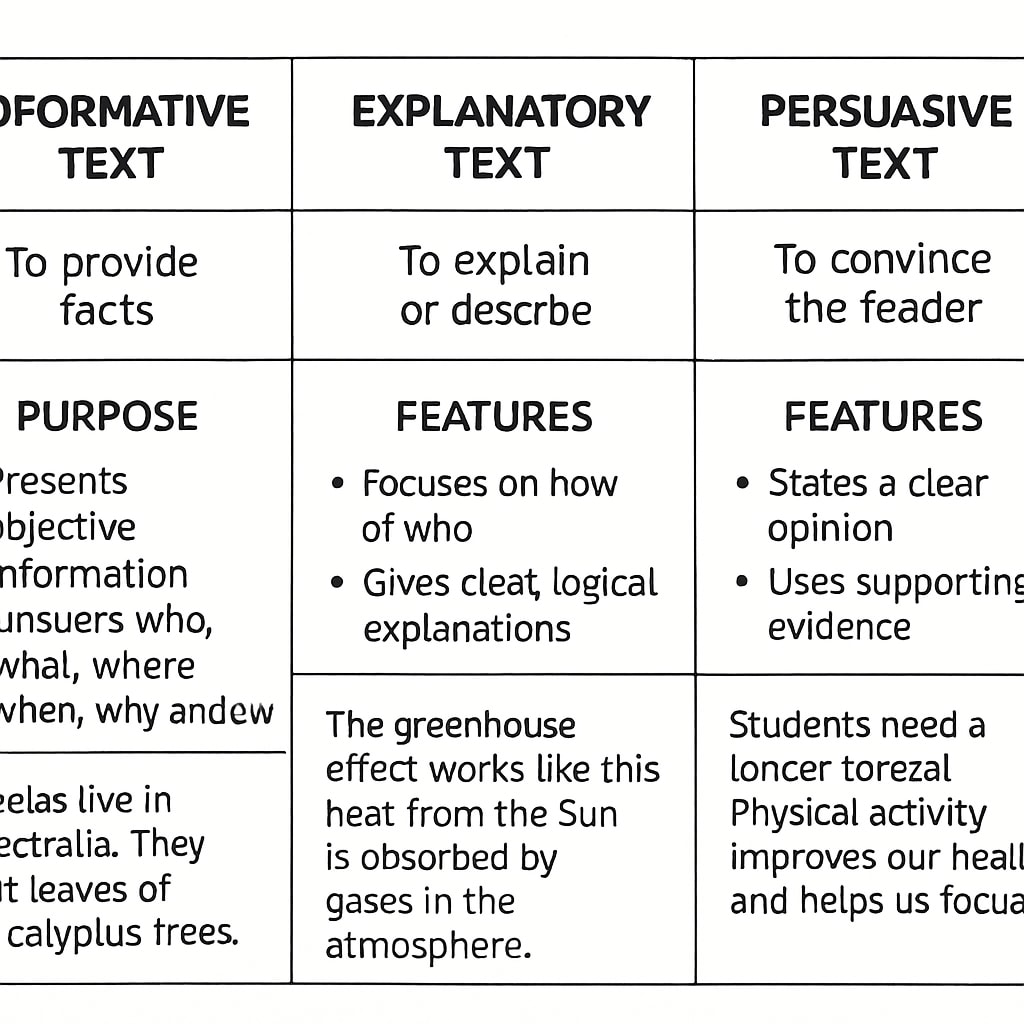For many K12 students, accurately identifying the purpose of a text in functional English reading exams can be a challenging task. Whether it’s distinguishing between information sharing, explanation, or persuasion, understanding the intention behind a passage is key to mastering reading comprehension. In this article, we’ll explore practical strategies to decode these purposes, helping students gain confidence in their exams.
Understanding Functional English and Its Text Purposes
Functional English focuses on real-world language use, emphasizing practical communication skills. Texts within functional English exams often serve one of three main purposes:
- To inform: These texts provide factual information, such as news articles, guides, or instructions.
- To explain: Explanation texts clarify processes or concepts, like manuals or scientific descriptions.
- To persuade: Persuasive texts aim to influence opinions or encourage actions, such as advertisements or opinion editorials.
Identifying these purposes requires careful attention to tone, language, and structure. For example, an informative text will use straightforward facts, while a persuasive text might employ emotional appeals or rhetorical questions.

Strategies for Better Comprehension and Purpose Identification
To improve your ability to determine the purpose of a text, follow these steps:
- Examine the title: Titles often offer clues about the text’s purpose. For instance, “How to Save Energy at Home” suggests an explanatory or informational text.
- Analyze keywords: Look for words that signal intention, such as “recommend,” “explain,” or “describe.”
- Evaluate structure: Is the text organized with bullet points (likely informational) or does it contain persuasive language like “you should” or “consider this”?
- Consider tone: Informative texts are neutral, explanatory texts are clear, and persuasive texts are more emotive or assertive.
These strategies will help students build a consistent framework for assessing text purposes and avoid common misunderstandings.

Common Pitfalls and How to Avoid Them
Despite using strategies, students often encounter pitfalls when judging text purposes. Here are some common errors and solutions:
- Misinterpreting tone: Students may confuse a neutral tone with persuasion. Always double-check for emotional language or arguments.
- Ignoring context: Contextual clues, such as the intended audience, can clarify the purpose. For example, a text aimed at young readers often simplifies explanations.
- Over-relying on keywords: While helpful, keywords alone don’t always indicate purpose. Combine keyword analysis with tone and structure evaluation.
By recognizing these pitfalls, learners can refine their approach and achieve greater accuracy.
Putting It All Together
Functional English reading exams don’t have to be daunting. By understanding text categories—informative, explanatory, and persuasive—and applying strategies like title analysis, tone evaluation, and structural review, K12 students can confidently tackle purpose-identification tasks. Practice is key, so incorporate these techniques into daily reading exercises for long-term improvement.
For further reading on text types and their features, explore resources such as Functional Grammar on Wikipedia and Language Analysis on Britannica.
Readability guidance: Use short paragraphs, follow structured steps, and distribute keywords evenly. Ensure a balance between technical explanations and practical advice for better engagement.


